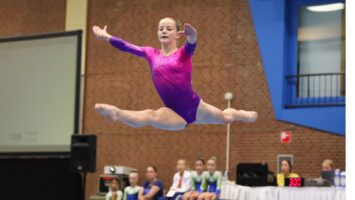
Youth Athletic Development
Youth athletic development, encompassing the physical, mental, and emotional growth of young athletes, is crucial. Providing appropriate training, instruction, and support aids in realizing their full athletic potential and promoting overall well-being.
The development of young athletes is crucial as it sets the foundation for their future athletic success and enjoyment of sports. It helps them build fundamental skills, physical fitness, and a strong work ethic. It also helps them develop important life skills such as teamwork, goal setting, discipline, and resilience.
Youth athletic development programs typically focus on age-appropriate training methods and activities that consider the physical and cognitive capabilities of young athletes. It involves a balance of skill development, strength and conditioning exercises, agility training, and sport-specific drills.
Coaches and trainers play a vital role in youth athletic development by providing proper guidance, instruction, and feedback. They should create a positive and supportive environment that encourages athletes to learn and grow while also preventing injuries and burnout.
It’s important to note that youth athletic development should prioritize the well-being and holistic development of young athletes over winning or achieving specific performance goals. Safety, age-appropriate training, and enjoyment of sports should always be the primary considerations in youth athletic development programs.
What are the three stages of development for youth sport?
The three stages of development for youth sport are:
1. Foundation Stage: This stage typically occurs between the ages of 6 to 12 years old. It focuses on introducing young athletes to a wide range of sports and physical activities. The emphasis is on developing fundamental movement skills such as running, jumping, throwing, and catching. At this stage, the focus is on fun, participation, and developing a love for sports.
2. Skill Acquisition Stage: This stage usually occurs between the ages of 13 to 16 years old. It focuses on refining and developing sport-specific skills. Athletes begin to specialize in one or a few sports and start participating in more competitive settings such as school teams, club teams, or leagues. The focus is on improving technical skills, tactical understanding, and physical capabilities specific to their chosen sports.
3. Elite Performance Stage: This stage generally occurs between the ages of 17 and beyond. It is the stage where athletes who have demonstrated exceptional talent and commitment pursue high-level competitive opportunities such as national teams, college scholarships, or professional sports. The focus is on maximizing athletic performance through advanced training methods, specialized coaching, and competition at the highest levels.
It’s important to note that these stages are general guidelines, and the age ranges can vary depending on the individual athlete and the sport. Additionally, athletes may transition through these stages at different rates, and some individuals may not progress beyond the foundation or skill acquisition stages.
What is Long-Term Athlete Development?
Long Term Athletic Development (LTAD) is a holistic and systematic approach to athlete development that takes into account the long-term physical, mental, and emotional well-being of athletes. It aims to optimize athletic potential and performance while minimizing the risk of injury and burnout.
LTAD recognizes that athletic development is a lifelong process that requires careful planning and progression across all stages of an athlete’s life. It emphasizes the importance of age-appropriate training, balancing training load and intensity, and incorporating periods of rest and recovery.
The key principles of LTAD include:
1. Developmentally Appropriate Training: Training programs are designed to meet the specific needs and capabilities of athletes at different stages of growth and development. This ensures that athletes build a solid foundation of physical literacy, technical skills, and game sense before progressing to more advanced training.
2. Multi-Sport Participation: Encouraging athletes to participate in a variety of sports and physical activities at a young age provides a broad base of motor skills and enhances overall athletic development. It also reduces the risk of overuse injuries and burnout associated with early specialization.
3. Individualization: Recognizing that each athlete is unique, LTAD promotes individualized training programs that consider the athlete’s strengths, weaknesses, goals, and stage of development. This allows for tailored and personalized training to optimize each athlete’s potential.
4. Periodization: Training programs are structured into different periods or phases that vary in intensity, volume, and focus. This allows for planned periods of rest, recovery, and skill development to prevent overtraining and optimize performance.
5. Long-Term Athlete Monitoring: Regular monitoring and assessment of physical, technical, and mental attributes allow coaches and trainers to track an athlete’s progress and adjust training programs accordingly. This ensures continuous improvement and early identification of any issues or imbalances.
LTAD is not solely focused on elite athletes but should be applied to all individuals participating in sports and physical activities. It promotes a healthy and sustainable approach to athletic development that supports lifelong participation in sports and overall well-being.
Final Thoughts
Helping youth athletes achieve their best sport performance while having fun, staying healthy and avoiding overuse injuries takes a long term, thoughtful approach to training. Training programs for youth athletes should be developmentally appropriate and keep the child’s wellbeing as the top priority.